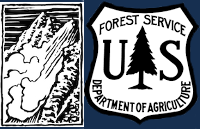Snowpack and Avalanche Discussion
<p>The avalanche equation is not complicated this weekend. On Friday morning, a major spring storm is beginning to impact the area with 10-20+” of snow likely by Saturday night. This will create dangerous avalanche conditions. Winds will increase Saturday and drift snow into deeper and more cohesive slabs that could break over wide areas. Avalanches are likely within the new and wind drifted snow and will be large enough to injure or kill riders and skiers.</p>
<p>Last weekend a similar spring storm resulted in natural avalanches in the Bridger Range (<a href="https://www.mtavalanche.com/images/22/natural-avalanches-northern-bridg…;) and Cooke City (<a href="https://www.mtavalanche.com/images/22/natural-avalanche-fin"><strong>ph…;). Outside of the advisory area in the East Rosebud drainage, five skiers from two separate groups were caught and partially buried by a natural loose snow avalanche while they were ascending a steep couloir. Luckily, no one was injured (<a href="https://www.mtavalanche.com/node/26486"><strong>details</strong></a>). Expect similar or larger avalanches this weekend.</p>
<p>On Sunday, temperatures will rise into the mid to upper 30s F and the powerful spring sun will come out. This will result in an increasing wet snow avalanche danger on slopes where the snow surface gets moist (<a href="https://www.youtube.com/watch?v=JqwSknw4e_E&list=PLXu5151nmAvT1nrM2…;). Move to shadier slopes or stay out of steep terrain if you notice the snow surface getting wet.</p>
<p>Indicators of instability such as recent avalanches, cracking and collapsing provide all the information you need about the snowpack and should keep you in lower angle terrain. Without these obvious signs, a careful assessment that tests for instabilities in the upper 3’ of the snowpack is necessary if you plan to go into terrain steeper than 30 degrees. Always follow safe travel protocols by skiing and riding with a partner, carrying a beacon, shovel and probe and exposing only one person at a time to avalanche terrain.</p>
<p>We will issue spring snowpack and weather updates each Monday and Friday through April, or as needed, and we will share relevant avalanche and snowpack information on our website and social media. If you get out, please send us your observations no matter how brief. You can submit them via our <a href="https://www.mtavalanche.com/node/add/snow_observation"><strong>website<…;, email (<a href="mailto:mtavalanche@gmail.com"><strong>mtavalanche@gmail.com</strong></a…;), phone (406-587-6984), or Instagram (#gnfacobs).</p>
Announcements, Avalanche Education and Events
Bridger Bowl is closed, and backcountry conditions exist. There is no avalanche mitigation or ski patrol rescue. In case of emergency, call 911. Please stay clear of work areas, snowmobiles, chair lifts and other equipment. Without the daily avalanche mitigation efforts of the ski patrol, backcountry conditions now exist within the boundaries of Bridger Bowl (video).
